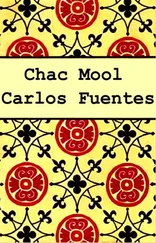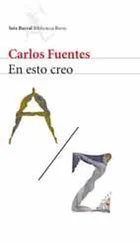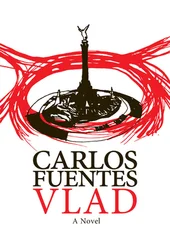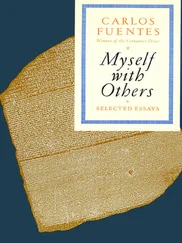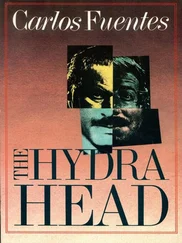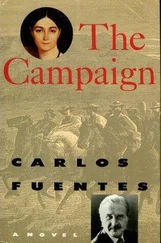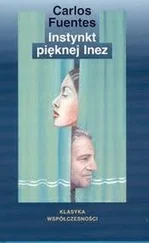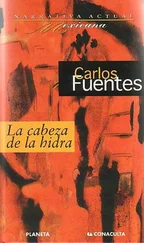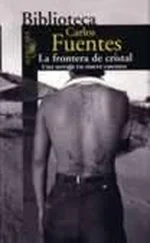First he invited me to walk with him through the Ciudad Universitaria, then later to go to his house in Coyoacán, an old residence from the colonial period, only one floor but very extensive, where in room after room, books supported, in a manner of speaking, the wisdom, if not of the ages, then of the end of the world. He noticed my delight and also my nostalgia. The encounter with Professor Sanginés reminded me of our conversations with Father Filopáter. It also brought to mind the absence of my friend Jericó and the lonely need we sometimes feel to share what we see and do with a brotherly friend. I don’t know if Jericó felt in Europe what I felt in Mexico. The pleasure would have doubled with his presence. We would have been able to comment on Antonio Sanginés’s lessons, compare them with those of Father Filopáter, and proceed, as we had done then, with our intellectual formation on the solid foundation of our friendship.
Professor Sanginés’s residence breathed the air shared by the man and his books. Both were joined in an internationalist ethic very much opposed to the new global laissez-faire. Globalization was a fact and its momentum swept away old frontiers, laws, and discourses, antiquated habits and defenses of sovereignty. The teaching of Antonio Sanginés did not deny this reality. It merely pointed out, with elegant emphasis, the dangers (for everyone) of a world in which international decisions were made without competent authority, just cause, juridical intention, or proportionality, and with war as the first, not the final, recourse. The catastrophic intervention of the United States in Iraq was the probative example of Sanginés’s theories. The authority had been nonexistent, fragile, and usurped. The cause, a true potpourri of lies: There were no weapons of mass destruction in Iraq, overthrowing the dictator was not the reason behind the resolution, the dictator fell and terror made its entrance, the region passed from maximum order (tyranny) to maximum chaos (anarchy), and the catastrophe did not ensure the flow of oil or confirm the lowering of prices. The little match on the Potomac became the conflagration in Mesopotamia.
“The only ones who win,” Sanginés concluded, “are the mercenaries who profit from the beginning and ending of wars.”
If this was Antonio Sanginés’s practical lesson in class, in private I discovered that his condemnation of international crime merely reflected his interest in crime tout court . I was discovering that half his library dealt not with the noble thoughts of Vitoria and Suárez, Grotius and Pufendorf, but with the obscure though profound examinations by Beccaria and Dostoyevsky of crime and criminals and, even more somber, the books of Butterworth on the police and of Livingstone and Owen on prisons.
When he explained the prison system, Sanginés offered details about subjects like security, living conditions, recognized privileges, health, access to the outside world, correspondence, legal contacts, family and conjugal visits, repatriation, internal discipline, punishments, segregation, cells, life sentences, and discretionary sentencing.
“Prison is like a mummy bandaged from head to toe in laws and institutions. The prison authorities, for the most part, behave, for good and for evil, in accordance with ‘regulations.’ Except there are so many ‘regulations’ that they allow great discretion in applying them and even in ignoring or violating them, creating a set of unwritten laws that, especially in the case of Mexico, eventually replace written law.”
I don’t know if he sighed: “Throughout Latin America homage is paid to the law only to violate it more thoroughly. Prisons in Mexico are no worse than the ones in Brazil. In Colombia the guerrillas impose their own prison law, mocking national statutes. In Central America, the disasters of war have created so many de facto situations that the legal code is a dead letter.”
The professor’s three little boys came in and, dressed as pirates and shouting about boarding and blood, they climbed on his head, his shoulders, his chest, making him laugh, and as soon as he had affectionately freed himself, he made a final comment as he adjusted his jacket and tie.
“Everything I tell you, Josué, about theory and laws does not matter if you do not observe life in our prisons up close.”
He looked at me in a sly manner I hadn’t seen until then, for our relationship had always been as direct as the association of a student with his teacher can be. I believe Sanginés attempted to dim the gleam in his eyes without waking my suspicions by lowering his lids-which he naturally did when he thought-and remarking that among the classes in the jurisprudence curriculum, one was required as a course but elective as to subject: forensic practice. It was up to me to decide the field in which I wanted to do this practice. Commercial or civil suits. Divorces, evictions, estates, seizures, bankruptcies, mergers, land boundaries, jurisdictions, appraisals, all of this the professor enumerated without referring to the internationalist subject of his class and, eventually, anchoring in prison law.
Did he sigh? Did he command?
The fact is that, motivated by Don Antonio Sanginés, I requested and secured permission to do my class in forensic practice in prison.
And not in any prison but in the most feared, most famous, but most unknown, visible in its strange name but invisible in its even gloomier (I supposed) interior. The grave of the living. The house of the dead, yes. The Mexican Siberia, a wasteland within a wasteland, a cave within another cave, a labyrinth with many entrances and no exit, an altar of consecrated blasphemies and profanations. The black hole. The metaphor of our life imprisoned in the womb at first, in a shroud at the last, in the deepest secrets of the domestic prison between tango and tomb. The prison built with the stones of the law. Hope, the prison of Zechariah. Liberation, the hope of Isaiah.
And so, with these thoughts, I commenced the conclusion of my law studies at the Palacio Negro de San Juan de Aragón, built underground in the bed of the old Río del Consulado, beneath the footsteps of the urban crowd which, I never suspected, could be heard as one more torture in the depths of this prison of prisons.
LA CHUCHITA APPROACHED and, with tears in her eyes, gave me her hand. In the other she carried a small mirror into which she looked from time to time with a mixture of serenity and alarm. Dress me, she said. I replied that she was already dressed. The girl cried out and began to pull off her clothing, I mean the long nightshirt of coarse homespun worn by all the girls imprisoned in the depths of San Juan de Aragón. I hate it, she screamed, tearing at her tangled hair flattened by grime, I hate seeing myself naked. You’re dressed, I said innocently. She leaped at me, trying to scratch me. They have to dress me, she screamed, they have to dress me. Then she bowed her head and withdrew while a blue boy, at her side, bent over the cement floor picking up something invisible, and a little farther on, another adolescent scratched incessantly at his back and complained of the pimples that itched, that burned, that never healed no matter how his bloodied nails scratched at dark skin.
The girl Isaura had a fixed idea: the volcano Popocatépetl. I sat beside her for a while. She spoke of nothing else. She repeated the name of the mountain over and over again, smiling, savoring the syllables. Po-po-ca-té-pel. I corrected her. Po-po-ca-té-petl. The word was Nahua-I corrected myself, wanting her to understand me: Aztec. She repeated: Po-po-ca-té-pel. I insisted: té-petl. She looked at me with sustained, inexplicable fury, as if I had violated a secret chamber, a sacred corner of her existence. I would have preferred the girl to attack me physically. She merely observed me with a distance that wanted to wound me and the entire world, the world that had sent her here, the empty swimming pool of children imprisoned in San Juan de Aragón. What would I say to her? There was no open pathway between my presence and her release. When she walked away repeating Po-po-ca-té-pel, she no longer was looking at me.
Читать дальше

